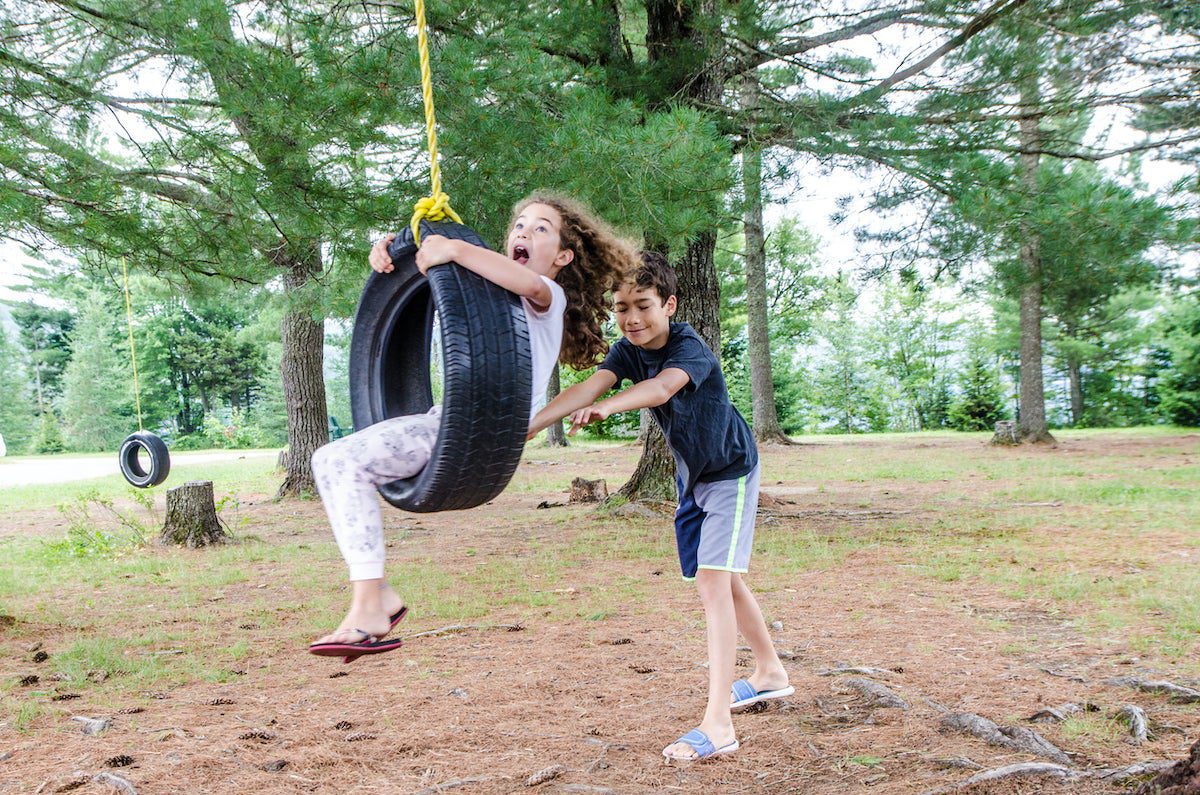
How to Make a Tree Swing With Rope: Simple Steps for Fun!
To make a tree swing with rope, tie secure knots on a sturdy branch and attach a durable seat. Ensure the rope is of high quality to hold the desired weight.
Contents at a Glance
ToggleBuilding a tree swing is a delightful way to bring the joy of play right into your backyard. With a few simple materials and some basic knot-tying skills, you can create a charming spot for relaxation or play. The key components of a good tree swing are a robust, long-lasting rope and a solid seat, paired with a strong tree limb to ensure safety and stability.
Setting up a swing is a straightforward task that can be completed in an afternoon, offering endless hours of outdoor fun. It’s an activity that blends DIY craftsmanship with the simple pleasure of swinging under the canopy of your own tree. Whether for the kids or the young at heart, a well-constructed tree swing becomes a cherished addition to any garden or outdoor space.
Crafting Your Tree Swing
Selecting a strong and healthy tree is vital to ensure the safety and longevity of your swing. Ideal trees should have a sturdy trunk and a thick, horizontal branch that is at least 8 inches in diameter. Hardwoods such as oaks and maples are excellent options due to their strong branches and resilience. Softwood trees like willows or fruit trees tend not to be suitable due to their weaker limbs and susceptibility to damage.
Common types of trees that are perfect for swings include:
- Oak: Known for their strength and durability.
- Maple: Offers robust branches for secure swing support.
- Ash: Features robust limbs and good load-bearing capacity.
- Beech: Provides strong, steady branches for swing installation.
Always inspect the tree for any signs of disease or weakness before installation. A tree with a solid structure will not only support the swing but will also ensure a safe swinging experience for years to come.
Selecting The Right Rope
Selecting the right rope for your tree swing is essential for both safety and durability.
You must decide between natural and synthetic ropes. Natural ropes, such as manila or hemp, offer a traditional look and are biodegradable. They blend well with outdoor environments but can deteriorate faster due to weather conditions. On the other hand, synthetic ropes, like polyester or nylon, are more resistant to weather, providing a longer lifespan for your tree swing.
Considering rope thickness and length is crucial. A good diameter for a swing rope is generally around 1/2 inch to 1 inch, ensuring it can support the weight while being comfortable to hold. Length will depend on the height of the branch from which the swing will hang; always purchase more than you think you’ll need to allow for adjustments.
Finding swing-specific rope might require visiting specialized outdoor or hardware stores, or searching trusted online platforms. Always opt for high-quality rope designed for outdoor use to ensure the safety and longevity of your swing.
Setting Up For Fun
Before setting up your tree swing, ensure you have all the necessary tools and materials on hand. To start, you will need a durable rope, a comfortable seat, and essential tools such as a ladder, measuring tape, and safety gear. The rope should be strong enough to bear weight and weather-resistant to ensure longevity.
Owning a set of gloves can protect your hands during the installation. Keep a saw or pruning shears nearby to remove any obstructive branches. Safety is paramount. Always check the tree’s health: a sturdy branch, free of disease, is essential for a secure swing. Double-check all knots and the seat stability before allowing anyone to enjoy the swing. Use a tree protector to prevent damage to the tree bark.
Securing The Branch
Ensuring the durability and stability of the chosen tree branch is crucial before attempting to install a tree swing. Begin by applying a significant amount of weight to test for any signs of weakness. If the branch flexes minimally and doesn’t crack or creak, it’s likely a solid candidate for your swing. After confirming the branch is sturdy, secure the rope by throwing it over the branch and tying a reliable knot. A commonly suggested knot for this task is the Bowline knot, famed for its strength and security. Make certain that the rope is free from frays and is made of a strong material capable of supporting the weight, like braided polyester or nylon. A successful swing relies on both the strength of the branch and the quality of the rope looped over it.
Knot Tying Techniques
Mastering knot tying techniques is crucial for constructing a secure and durable tree swing. Start by selecting a high-quality, weather-resistant rope. The Bowline knot is recommended for creating a loop that will not slip under pressure, which is essential for the safety of the swing. To tie this, make a small loop in the rope’s end, then pass the free end through from underneath. Wrap it around the standing part and back down through the loop. Tighten firmly.
For attaching the rope to the swing, a Running Bowline or a Double Figure Eight can be effective in preventing slippage and wear. These knots maintain their grip even when the swing is in motion. Ensure that each knot is tied tightly and is inspected regularly for signs of wear or damage. Abrasion-reducing sleeves can also be used to protect the rope where it contacts the tree branch.
Final Touches And Safety Checks
After attaching the swing seat, check that the ropes are securely fastened and that the seat hangs level from a comfortable sitting height. To ensure an even and safe swing motion, verify both sides of the rope are of identical length and make small adjustments as needed. It is critically important to test the swing for stability and motion before allowing anyone to use it.
Regular maintenance is vital to avoid accidents and prolong the life span of your tree swing. Periodic checks should be made to the condition of the rope and the stability of the swing seat. Look for signs of wear or weakness in the rope such as fraying or discoloration. Ensure that there are no sharp edges or splinters on the swing seat that could cause injury.

Credit: www.amazon.com
Frequently Asked Questions Of How To Make A Tree Swing With Rope
What Is The Best Rope To Use For A Tree Swing?
The best rope for a tree swing is braided polyester or polypropylene for its strength, durability, and resistance to outdoor elements.
How Do You Make A Rope Swing Without Climbing?
To make a rope swing without climbing, use a weighted throw bag to loop the rope over a sturdy branch. Secure both ends on the ground to create the swing seat, and ensure everything is tightly fastened for safety before use.
Will A Rope Swing Damage A Tree?
A rope swing can damage a tree without proper padding to protect the bark. Continuous friction can harm the tree’s structure and health. Choose a durable, tree-friendly material for the swing to minimize impact.
How Do You Hang A Rope On A Tree?
Choose a strong, living branch for support. Throw a rope over the limb, avoiding damage to the tree. Secure the rope with a reliable knot, like a bowline, ensuring it’s tight and safe. Double-check stability before adding weight to the rope.
Conclusion
Crafting your own tree swing with rope is both rewarding and fun. It’s an activity that blends creativity with outdoor pleasure. Remember, safety and tree health are paramount. With the steps outlined, you’re now equipped to create that perfect backyard escape.
So, grab your rope, find a sturdy branch, and let the swinging begin!





